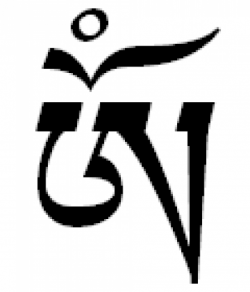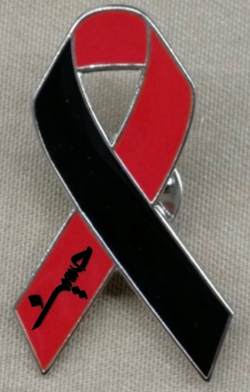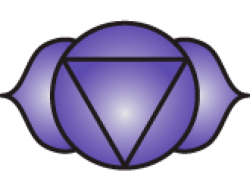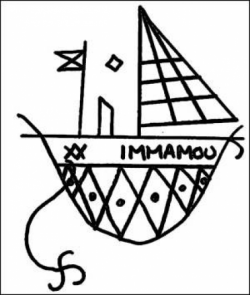What's the meaning of the Tibetan Aum »
Tibetan Aum
This page is about the meaning, origin and characteristic of the symbol, emblem, seal, sign, logo or flag: Tibetan Aum.

Since Buddhism arose out of Hinduism, it is not surprising that the mantra 'Aum' was absorbed into the Buddhist tradition; however, Buddhists almost never transliterate it as ‘Aum,’ but use ‘Om’ instead.
The mantra "Om mani padme Hum" in Tibetan script
There are many Buddhist mantras that incorporate the sound of ‘Om’ into their formulation. Probably the most famous of these is the six-syllabled mantra, Om Mani Padme Hum. The common translation of this mantra is, "Hail the jewel in the lotus" (‘Aum’ = Hail, ‘Mani’ = Jewel, ‘Padme’ = Lotus and Hum). However, the scholar Donald Lopez, in his book Prisoners of Shangri-La: Tibetan Buddhism and the West, challenges this conventional translation, which he claims to be an interpretation supported by neither linguistic analysis nor Tibetan tradition. He suggests that Manipadme is actually the name of a bodhisattva, a form of Avalokiteshvara who in any case has many other names, including Padmapani or “lotus flower in hand.” The Brahminical insistence on absolutely correct pronunciation of Sanskrit broke down as Buddhism was exported to other countries where the inhabitants found it difficult to reproduce the sounds. So in Tibet, for instance, where this mantra is on the lips of many Tibetans all their waking hours, the mantra is pronounced, "Om mani peme hum."
In China, the character ‘Om’ appeared as "唵" in Chinese Buddhism, and was also utilized in prayers towards Amitbha Buddha in Pure Land Buddhism, among other sects.
The Brahmic script om-ligature has become widely recognised in Western counterculture since the 1960s, mostly in its standard Devanagari form (ॐ), but the Tibetan alphabet om (ༀ) has also gained limited currency in popular culture.
- 3,604 Views
Graphical characteristics:
Asymmetric, Open shape, Monochrome, Contains both straight and curved lines, Has no crossing lines.
Category: Religious Symbols.

More symbols in Religious Symbols:
Religious symbolism is the use of symbols, including archetypes, acts, artwork, events, or natural phenomena, by a religion. Religions view religious texts, rituals, and works of art as symbols of co… read more »
Citation
Use the citation below to add this symbol to your bibliography:
Style:MLAChicagoAPA
"Tibetan Aum." Symbols.com. STANDS4 LLC, 2024. Web. 26 Jul 2024. <https://www.symbols.com/symbol/tibetan-aum>.








Have a discussion about Tibetan Aum with the community:
Report Comment
We're doing our best to make sure our content is useful, accurate and safe.
If by any chance you spot an inappropriate comment while navigating through our website please use this form to let us know, and we'll take care of it shortly.
Attachment
You need to be logged in to favorite.
Log In